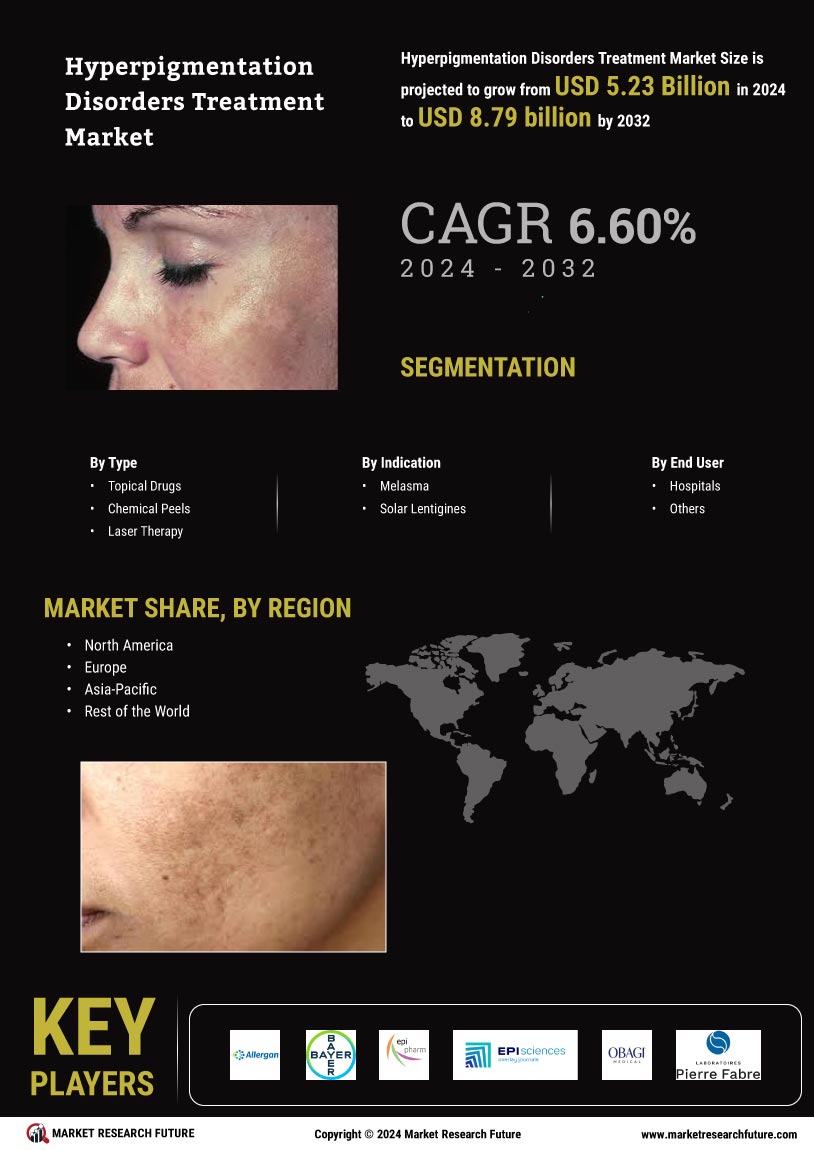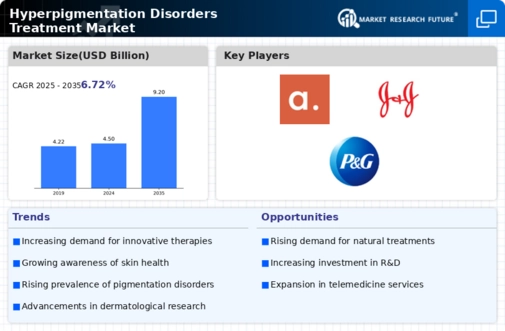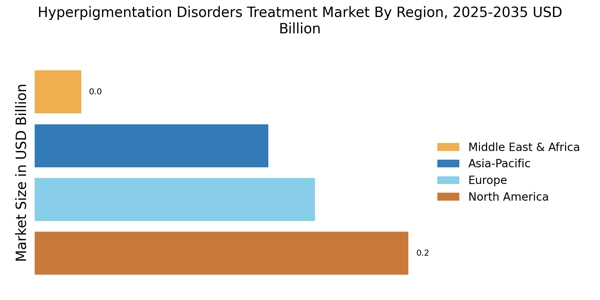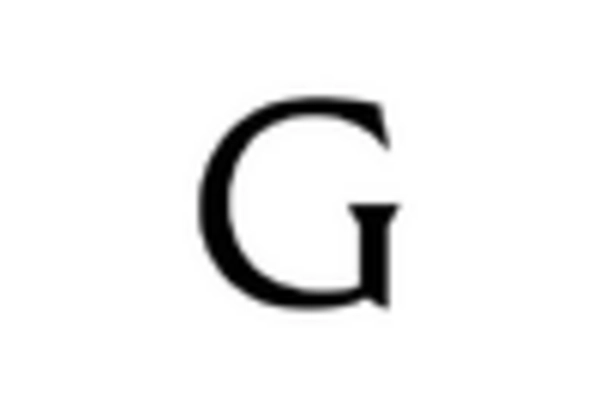Expansion of Distribution Channels
The expansion of distribution channels, particularly through e-commerce platforms, is a notable driver for the Hyperpigmentation Disorders Treatment Market. The convenience of online shopping has transformed how consumers access skincare products, including those targeting hyperpigmentation. Data indicates that e-commerce sales in the skincare sector have increased by over 20% in recent years, highlighting a shift in purchasing behavior. This trend allows consumers to explore a wider range of products and brands, facilitating informed choices. As more companies enhance their online presence and optimize their distribution strategies, the accessibility of hyperpigmentation treatments is expected to improve, further stimulating market growth.
Increasing Awareness of Skin Health
The rising awareness regarding skin health and aesthetics appears to be a pivotal driver for the Hyperpigmentation Disorders Treatment Market. Consumers are increasingly educated about skin conditions, leading to a surge in demand for effective treatments. This heightened awareness is reflected in the growing number of dermatology clinics and skincare brands focusing on hyperpigmentation solutions. Market data indicates that the skincare segment is projected to grow at a compound annual growth rate of approximately 5.5% over the next few years, underscoring the potential for hyperpigmentation treatments. As individuals seek to enhance their appearance, the market for these treatments is likely to expand, driven by a combination of consumer education and the desire for healthier skin.
Advancements in Dermatological Research
Ongoing advancements in dermatological research are likely to play a crucial role in shaping the Hyperpigmentation Disorders Treatment Market. Innovations in treatment modalities, including laser therapies, chemical peels, and topical agents, are emerging as effective solutions for hyperpigmentation. Research indicates that the efficacy of these treatments has improved significantly, with some laser therapies showing up to 80% improvement in skin tone. Furthermore, the development of new formulations and delivery systems enhances the effectiveness of topical treatments, making them more appealing to consumers. As research continues to unveil new insights into skin health, the market for hyperpigmentation treatments is poised for substantial growth.
Rising Incidence of Hyperpigmentation Disorders
The increasing prevalence of hyperpigmentation disorders, such as melasma and post-inflammatory hyperpigmentation, is a significant driver for the Hyperpigmentation Disorders Treatment Market. Factors such as sun exposure, hormonal changes, and skin injuries contribute to the rise in these conditions. Recent studies suggest that nearly 30% of the population may experience some form of hyperpigmentation, particularly in urban areas where environmental stressors are more pronounced. This growing incidence necessitates effective treatment options, thereby propelling the market forward. As healthcare providers recognize the need for targeted therapies, the demand for innovative solutions in the hyperpigmentation treatment sector is expected to escalate.
Growing Demand for Personalized Skincare Solutions
The trend towards personalized skincare solutions is becoming increasingly prominent within the Hyperpigmentation Disorders Treatment Market. Consumers are seeking tailored treatments that address their specific skin concerns, including hyperpigmentation. This shift is prompting skincare companies to develop customized products and treatment plans based on individual skin types and conditions. Market analysis suggests that personalized skincare is expected to grow at a rate of 7% annually, reflecting a significant shift in consumer preferences. As brands invest in research and development to create bespoke solutions, the market for hyperpigmentation treatments is likely to benefit from this trend, catering to a more discerning clientele.


















Leave a Comment